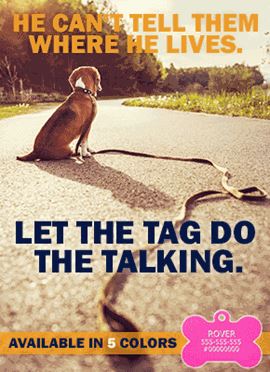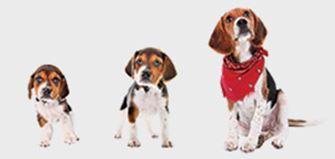
How to Teach Your Dog to Play Dead (Just In Time for Halloween)
It’s cute. It’s entertaining. It’s fun. It reinforces a relaxed state in your dog, and it builds your relationship. Also, bringing a “zombie” dog back from the dead is a surefire way to impress (or maybe even scare) your friends and visitors this Halloween season! So, let’s get to it!
What is it?
For this fun trick, you say “BANG” (or “Pew! Pew!” if you’re a stormtrooper), and your dog falls over. He will continue to play dead until he is miraculously brought back to life on your command.
What you will need:
- A distraction-free area: Teaching the trick in a room that your dog is familiar with is recommended. Avoid teaching new tricks and behaviors in a new environment, since the novelty of the new environment can be a distraction for your dog.
- A dog: A slightly hungry dog will be better motivated for this trick, so try training this trick prior to meals.
- A treat that your dog is really (no, like, really) into: Semi-soft kitty kibble, cut up pieces of cheese, or tiny bits of roasted or boiled meat are great for training. Treats should be broken or cut into small pieces (about ½ the size of your pinky nail). You should have PLENTY of the treats on hand (40–60 pieces should do it!)
The Game Plan
We are going to break this trick down into 4 steps:
- Teaching the dog what we want him to do (the behavior).
- Adding a visual cue (in this case, our “gun” hand.)
- Adding a verbal cue (“BANG” or “PEW!”)
- Teaching the dog to generalize the behavior.
1. Teaching the Behavior
It’s easiest to start with the dog in a “sphinx down” (also called sternal recumbent) position, with the forearms out in front, chest and abdomen against the ground, and back feet tucked under the dog.
With treats in hand, gently and slowly wave your hand in front of the dog’s nose to let him know that the treats are there. You’re going to use these treats as a “lure” to get the dog into proper “dead” position. Allow him to nibble and sample a few of the treats once he’s following your hand with this nose.
Once he’s tuned into the treats, S-L-O-W-L-Y pull the treat to the side toward his shoulder blade, and up toward his withers. As his nose follows the treat, his head will turn, and he will naturally have to reposition himself into the “side lying” position (also called the lateral recumbent position). Once the dog is lying on his side, reward him with a few of the treats and continue giving him treats to keep in him that position for 5–10 seconds. You may have to give treats one after another in the beginning, but that’s okay. Allow the dog to become comfortable in the position.
Repeat this as many times as necessary until the dog is following the treat quicker, seamlessly, and consistently from the sphinx position onto his side. A good rule of thumb is not to move forward until the dog is doing what you want him to do (in this instance, following the lure) 8/10 times.
2. Adding the Visual Cue
Once he’s following the lure in your hand consistently, you can then begin to fade the use of the lure (but continue giving the reward). You can also shape your hand into a “gun” (pinky, ring, and bird finger held down, ring and thumb extended, pointed at the dog) at this point. Repeat the exercises, just as you did when you had the lure in hand (but without the lure), and with your hand in the shape of the “gun.” Again, reward the dog for “dying” and remaining “dead” (lying on his side) in response. Once the dog reaches the point where he will remain in the “dead” position for treats, you can begin to space out the treats to every 5 seconds, and then every 10 seconds until you call the dog back up to you.
3. Adding the Verbal Cue
Once your dog is consistently (8/10 times) following your gun-shaped hand and “dying” without the lure being present, you can add the word (also called a verbal cue). Simply say “Bang!” (or “Pew! Pew!”) before going through the exercise, rewarding him once again for staying in the “dead” position. Practice this with the using the word until he or she is responding consistently and reliably to the verbal cue (“Bang”). With each successful repetition, use a less exaggerated hand motion until you’re getting the playing-dead behavior by just “pointing your gun” finger at him.
Once he is responding reliably (8/10 times) to the “BANG!” verbal cue when you point your finger at him, you can begin to move to a standing posture, first by asking for the behavior from a kneeling position, then from a standing position, and eventually, standing in different rooms
4. Generalizing the Behavior
The last step of this is to practice, practice, and practice some more. Practice in different rooms, in the yard, and in any new places you have access to. Also, as he becomes more reliable, begin practicing with other people and distractions around. This will teach your dog that when he hears his verbal cue anywhere (“BANG!”) he can play dead and possibly get a treat! Once you’ve practiced enough, you can have your dog play dead anywhere and in front of anyone.
TroubleSHOOTING the Dog
My dog is getting confused!
This can happen if you move too fast, or if the dog doesn’t completely understand what you are trying to get him to do. Go back and start over from where he was last. It’s not uncommon for dogs to “forget” a new trick, so training and retraining is common.
My dog will not do the trick when I try to show it to my friend or when I’m outside.
Whenever a variable is changed from the last session, the dog may have a hard time associating what you are asking (the trick he’s been working on) with the new variable (your friend who is now here staring at him). Typically, dogs do not generalize new behaviors to new contexts well, so again, going back to the beginning to train and retrain from the point he does remember will help him to remember his training (this is called spontaneous recovery). The more patient you are, and the more time you take to go back and retrain, the better your dog will become at learning to associate new behaviors to new contexts. Eventually he will get to the point where he can associate newly learned behaviors to all situations.
My dog won’t follow the lure all the way into the right position.
This is a common issue with dogs that are uncomfortable in a lying position, fairly new to training, or overly eager for the treat. For these dogs, it may help to give treats in successive increments, or all the way into the position, inch-by-inch, instead of waiting until he’s in the position. Eventually the dog will get better at following the lure, and you can space out the distance at which you give the lure until you’re only giving it to him once he’s in the correct position.













